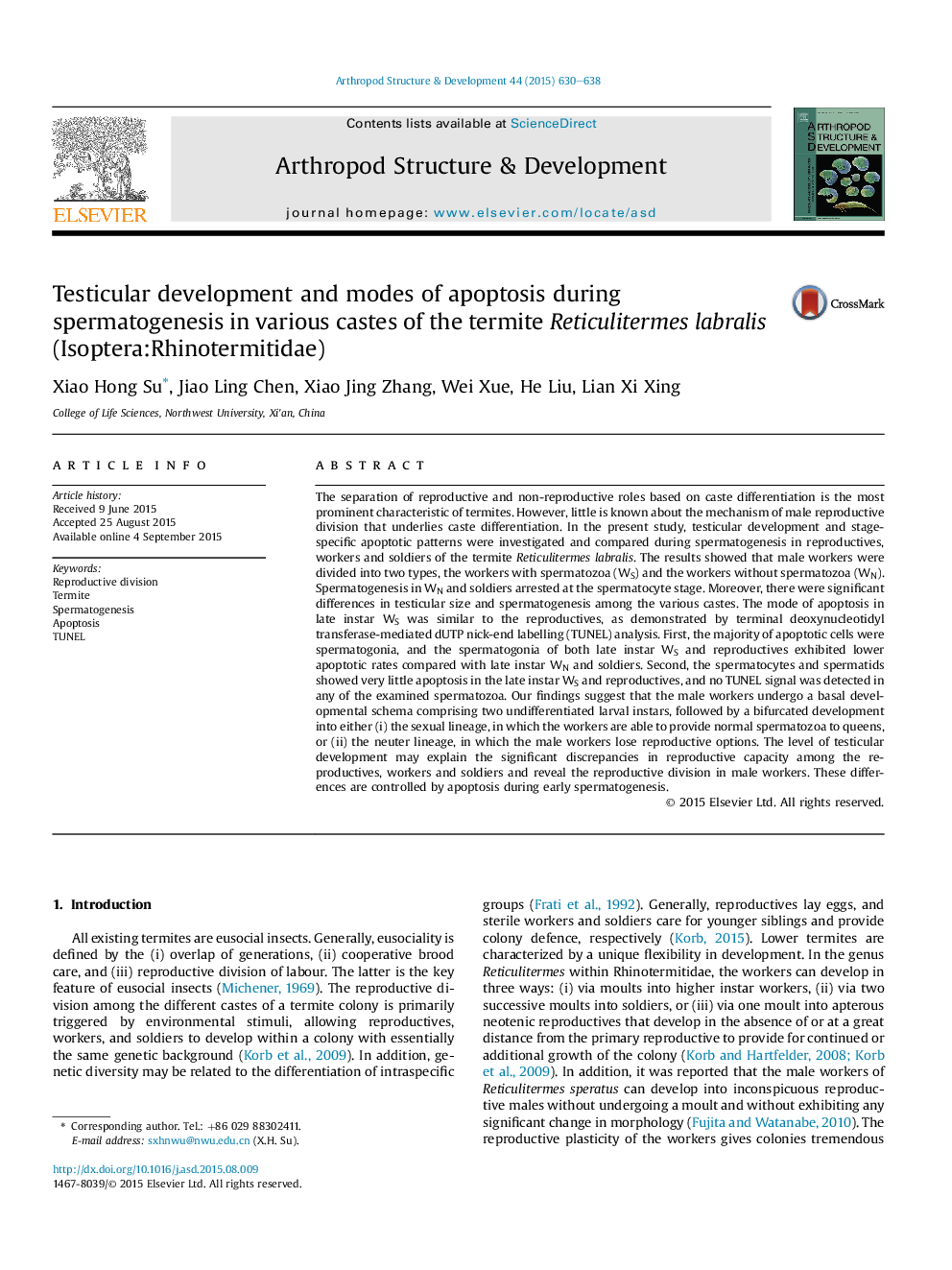| کد مقاله | کد نشریه | سال انتشار | مقاله انگلیسی | نسخه تمام متن |
|---|---|---|---|---|
| 2778513 | 1153140 | 2015 | 9 صفحه PDF | دانلود رایگان |

• The workers are divided into two types, the workers with spermatozoa (Ws) and the workers without spermatozoa (WN).
• The male late instar Ws produce the normal spermatozoa.
• There is a fundamental difference in the reproductive capability between male and female workers.
• The male WN and soldiers lose reproductive options.
• Apoptosis of spermatogonia is an efficient regulatory mechanism affecting the reproductive capacity of labour in termite.
The separation of reproductive and non-reproductive roles based on caste differentiation is the most prominent characteristic of termites. However, little is known about the mechanism of male reproductive division that underlies caste differentiation. In the present study, testicular development and stage-specific apoptotic patterns were investigated and compared during spermatogenesis in reproductives, workers and soldiers of the termite Reticulitermes labralis. The results showed that male workers were divided into two types, the workers with spermatozoa (WS) and the workers without spermatozoa (WN). Spermatogenesis in WN and soldiers arrested at the spermatocyte stage. Moreover, there were significant differences in testicular size and spermatogenesis among the various castes. The mode of apoptosis in late instar WS was similar to the reproductives, as demonstrated by terminal deoxynucleotidyl transferase-mediated dUTP nick-end labelling (TUNEL) analysis. First, the majority of apoptotic cells were spermatogonia, and the spermatogonia of both late instar WS and reproductives exhibited lower apoptotic rates compared with late instar WN and soldiers. Second, the spermatocytes and spermatids showed very little apoptosis in the late instar WS and reproductives, and no TUNEL signal was detected in any of the examined spermatozoa. Our findings suggest that the male workers undergo a basal developmental schema comprising two undifferentiated larval instars, followed by a bifurcated development into either (i) the sexual lineage, in which the workers are able to provide normal spermatozoa to queens, or (ii) the neuter lineage, in which the male workers lose reproductive options. The level of testicular development may explain the significant discrepancies in reproductive capacity among the reproductives, workers and soldiers and reveal the reproductive division in male workers. These differences are controlled by apoptosis during early spermatogenesis.
Journal: Arthropod Structure & Development - Volume 44, Issue 6, Part B, November 2015, Pages 630–638